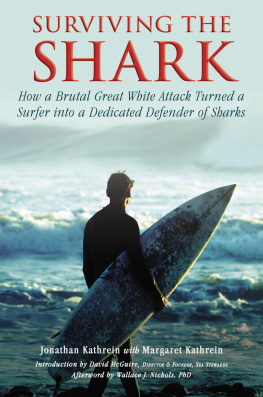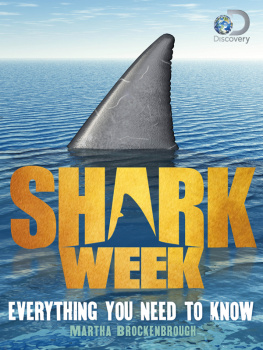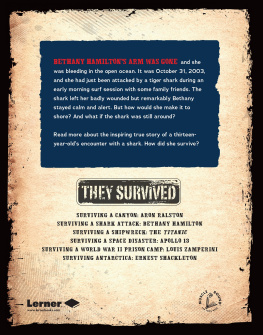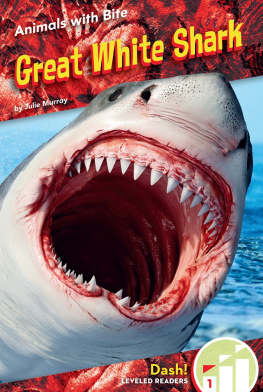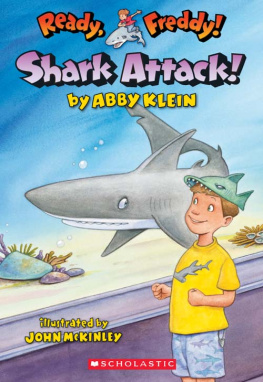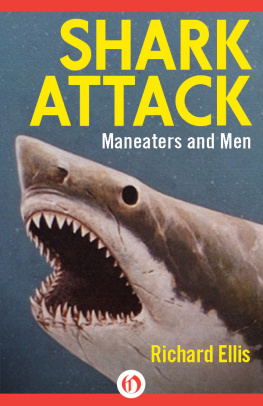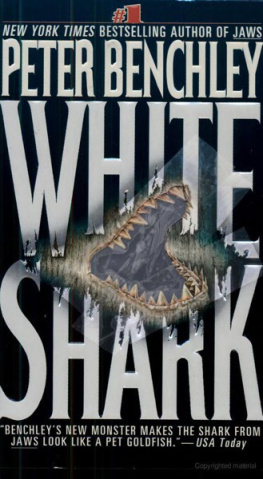SURVIVING THE SHARK
SURVIVING
THE SHARK
HOW A BRUTAL GREAT WHITE ATTACK
TURNED A SURFER INTO A DEDICATED
DEFENDER OF SHARKS
BY
JONATHAN KATHREIN AND
MARGARET KATHREIN
W ITH A N I NTRODUCTION
B Y D AVID M CGUIRE , D IRECTOR AND F OUNDER ,
S EA S TEWARDS
A ND A FTERWORD
B Y W ALLACE J. N ICHOLS , P H D

Copyright 2012 by Jonathan Kathrein and Margaret Kathrein
All Rights Reserved. No part of this book may be reproduced in any manner without the express written consent of the publisher, except in the case of brief excerpts in critical reviews or articles. All inquiries should be addressed to Skyhorse Publishing, 307 West 36th Street, 11th Floor, New York, NY 10018.
Skyhorse Publishing books may be purchased in bulk at special discounts for sales promotion, corporate gifts, fund-raising, or educational purposes. Special editions can also be created to specifications. For details, contact the Special Sales Department, Skyhorse Publishing, 307 West 36th Street, 11th Floor, New York, NY 10018 or info@skyhorsepublishing.com.
Skyhorse and Skyhorse Publishing are registered trademarks of Skyhorse Publishing, Inc., a Delaware corporation.
Visit our website at www.skyhorsepublishing.com.
10 9 8 7 6 5 4 3 2 1
Library of Congress Cataloging-in-Publication Data is available on file.
ISBN: 978-1-61608-680-0
Printed in the United States of America
In memory of Mary J. McClellan (19132011)
~ mother, grandmother, and great-grandmother ~
who taught us so much and encouraged
us to tell our story.
TABLE OF CONTENTS
ACKNOWLEDGMENTS
T hank you to our family, Reed, Michael, and Eric Kathrein, for supporting us through the shark experience and beyond, and for inspiring us in so many ways, even today.
Thank you to Tricia Fox and Vicky Van Meter for their expert editing and advice.
Credits
We gratefully acknowledge Dr. John McCosker, Senior Scientist and Chair, Aquatic Biology, California Academy of Sciences, for providing information about sharks and shark science.
We gratefully acknowledge David McGuire, Director of Sea Stewards and Research Associate, Department of Aquatic Biology, California Academy of Sciences, for his photographs and contributions on shark science for our chapter Shark Science.
INTRODUCTION
S harks loom large in our imagination, and of all sharks, it is the great white shark that looms largest. The media in general and events like the Discovery Channels Shark Week prime our natural atavistic fear with stories of shark attacks and insensible man-eating machines. It is a small wonder that a Midwestern housewife or a schoolchild who has yet to see the ocean fears sharks. Sharks make good press, and white shark attacks make the best press of all.
Living just north of San Francisco, we are in the center of the Red Trianglethe region bounded by Monterey to the south, Point Arenas to the north, and the shark feeding grounds of the Farallones to the westan area owning the distinction of the greatest number of white sharkhuman interactions in the world. Whereas most self-preserving surfers and divers avoid coasts posted with shark warnings, as a shark conservationist and documentarian, I seek out sharks and have had many eventful encounters. Yet, among thousands of shark encounters, the closest I have gotten to a shark attack was an ankle nip by a baby black-tip reef shark in a shallow lagoon of the South Pacific. The tiny teeth barely broke through my wetsuit bootee, but we were both surprised. The shark no doubt saw nothing more than a fish-shaped object and was shocked to find it attached to a six-foot human. The speed and the ferocity of this perfectly adapted young shark equally surprised me. Like other sharks, this little shark was just doing what it evolved over millions of years to do. And like its much larger relative, this shark had been equipped with a remarkable sensory and biomechanical tool chest.
It is hard to imagine what it is like to be in the jaws of a three-thousand-pound, sixteen-foot shark, yet in this book Jonathan and his mother Margaret help us to do just that, but in an unexpected, almost tender manner. The fear of a young boy as he is shaken like a rag doll in the maw of a great white is as palpable as a mothers love, and the tragic desperation she must feel for the near loss of one of her children. This is a story of redemption and courage. But what is most remarkable is that this book is a kind of love story, a story of love for the ocean, and, strangely, even for sharks.
Years after his shark experience, I invited Jonathan to speak at a film screening and panel on sharks as part of my non-profit Sea Stewards annual Sharktober events. (Sharktober is what surfers call the months when the white sharks reconvene off our shoreline and coincidentally, when the number of humanshark interactions along our coast peaks). A quiet, self-possessed, and handsome young man, Jonathan impressed me as much with his account of the experience as with his motivational appeal. Contrary to the natural response, Jonathan used his experience to discuss the importance of sharks in the ocean, and how we are killing millions more than kill us. With this book, he and his mother have transformed an unimaginably terrifying experience into an allegorical journey of survival, the survival of a species rapidly becoming endangered with extinction. This is a story of Shark Bites Man, and Man Bites Shark Back with a ferocity and rapacity heretofore unknown. Consummately adapted to their role as top predators, the hunters have now become the hunted.
As terrible as they may seem, white shark attacks are really very rare, according to white shark expert Dr. John McCosker of the California Academy of Sciences, and in fact most victims, like Jonathan, thankfully survive to tell the story. Yet we are also killing sharks at the rate of tens of millions per year as accidental bycatch on swordfish and tuna longlines, and the shark fin trade supplies an increasing number of fins to satisfy a voracious demand for a luxury soup.
While shark attacks on humans are extremely rare, human attacks on sharks are increasingly common. This loss of sharks is unraveling the tapestry of ocean ecosystems and upsetting the balance in the planets most important organ. Through our ignorance and even fear, we are erasing the regulators of the sea, the surgeons and the sanitarians that keep fish populations strong, and their habitat healthy and clean. With one-third of oceanic shark species listed as threatened by the International Union for the Conservation of Nature, we are losing sharks before we can even grasp their importance.
We are the apex predators and our consumption is killing not only sharks, but also threatening the entire ecosystem. Once tossed aside as an unwanted commodity, shark fins are increasingly in demand and that demand is creating a brutal black market trade. Sharks are being killed just for their fins, the body cast back into the sea to die, and like the demand for elephant ivoryanother unnecessary luxurypeoples desire for this coveted appendage has caused shark populations to plummet.
But perhaps we are slowly coming to realize the beauty of sharks and their role in the ocean food web. With stories like this, we are seeing an increase in appreciation that sharks are not just killing machines, but essential components of an integrated ocean ecosystem. Shark sanctuaries are sprouting up in Pacific Island nations like Palau, the Marshall Islands, and the Federated States of Micronesia and other nations like Belize and the Bahamas are following suit. Divers are schooling around sharks, snapping pictures, and as a result, local economies are flourishing.
Next page
